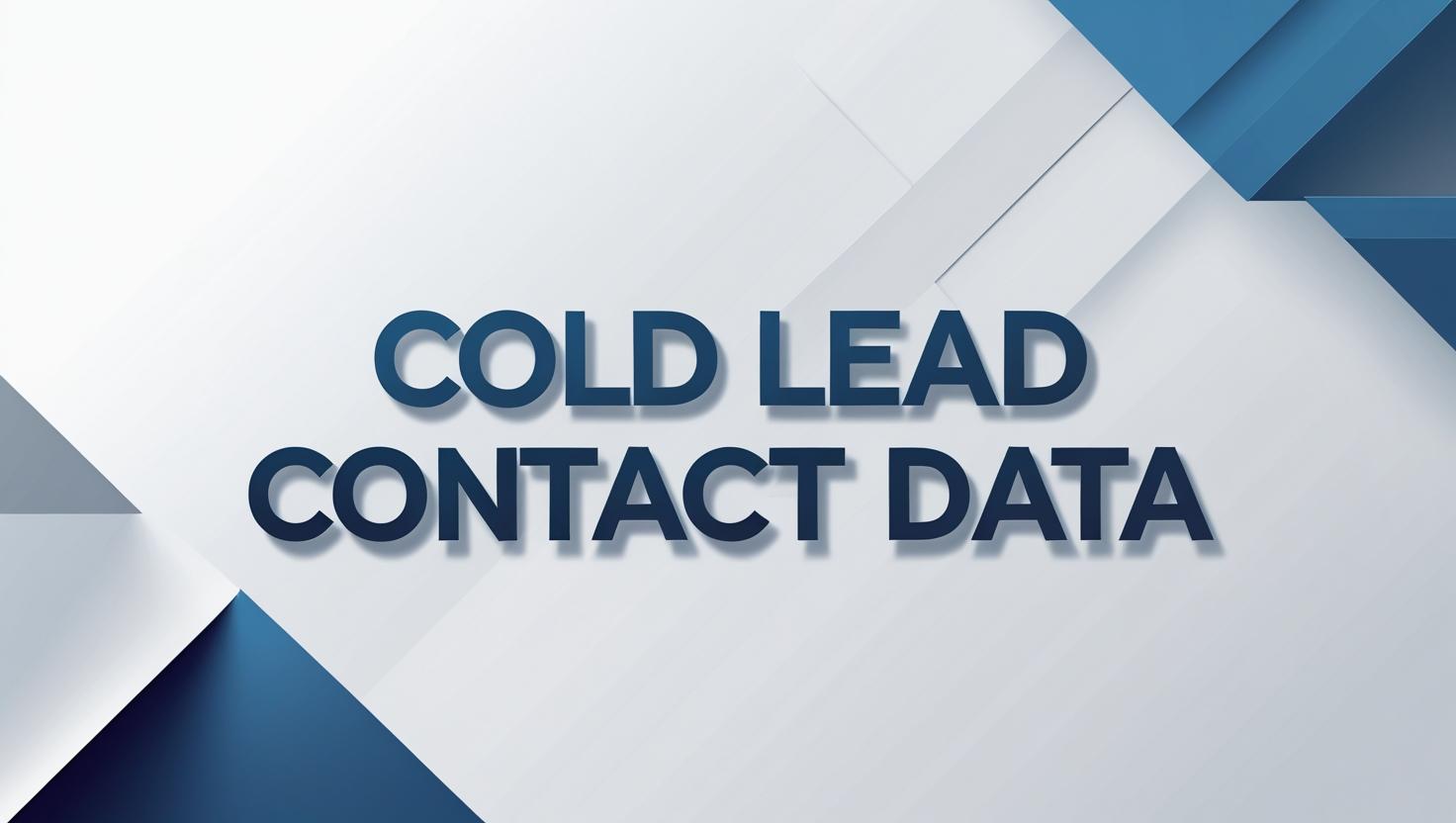What are Cold Leads?
Imagine you have a big list of names. These people don’t know you, and you’ve never spoken to them. This list is full of “cold leads.” A cold lead is someone who has not shown any interest in your products or services before. They haven’t filled out a form, clicked on an ad, or visited your website. Think of them as a stranger you want to meet. The goal is to get their attention and turn them into a customer. This process is often called “cold outreach.” But before you can reach out, you need their contact information. This information is your “cold lead contact data.” It’s the most important first step. This data lets you start a conversation. It’s the key to unlocking new business.
Why is Cold Lead Data Important?
Gathering good data is very important. It’s like finding the right address before you mail a letter. If the address is wrong, your letter will never arrive. The same is true for cold leads. If your data is wrong, your emails will bounce. Your phone calls will go to the wrong person. This wastes your time and effort. High-quality data ensures your message gets to the right person. With the right data, you can create a personalized message. It feels less like a random sales pitch. Instead, it feels more like a targeted conversation. Good data helps you find the right people. It helps you find them at the right companies. In short, it makes your outreach much more successful.
What’s in Cold Lead Contact Data?
Cold lead data can include many things. The most common pieces are a name and an email address. But it can be much more detailed than that. Many times, it also includes a phone number. For businesses, you might also have the person’s job title. You could have their company’s name and address. Sometimes, the data includes the size of their company. Other useful information might be the industry they work in. You might also find out their location. All of this information helps you learn more about them. It helps you decide who to talk to. All of these details make your outreach stronger.
How to Find Cold Lead Data
You can find cold lead data in several ways. One way is to buy it from a data provider. These companies specialize in finding contact information. They collect data from many public sources. They then sell it in large lists. Another way is to use special software. These tools can scan websites and social media. They can find contact information for you. It’s also helpful to look at company websites. Sometimes, you can find contact pages. Gathering data is a key step.</p>
How to Make Sure Your Data Is Good
After you find the data, you must check it. Bad data can hurt your efforts. A bad email address list can get you marked as a spammer. A bad phone number list can waste your time. You can use special tools to verify email addresses. These tools check if an email is real. They can also check if it is active. For phone numbers, you can check them against a “do not call” list. This is very important. It prevents you from calling people who do not want to be called. Checking your data saves you from problems later on. It keeps your outreach clean.
The Problem with Bad Data
Using bad data is like trying to drive with a flat tire. You won’t get very far. Similarly, bad data leads to low success rates. Emails might “bounce” back to you. This means they were not delivered. High bounce rates can harm your sender reputation. This can cause your emails to go to spam folders. Phone numbers might be disconnected. You might reach the wrong person. All of this is wasted time and money. It can also hurt your business’s reputation. People do not like being contacted by mistake. Poor quality data is a big problem. It makes your work much harder. It’s better to have a small list of good contacts. This is much better than having a large list of bad contacts.
The Right Way to Use Cold Lead Data
Once you have your clean data, you must use it correctly. The first step is to personalize your message. Do not send a generic email. Mention their name. Mention their company. Say why you are contacting them. A personalized message shows you did your homework. It shows you care. The second step is to be helpful. Your goal is not to sell right away. Your goal is to start a conversation. Offer something of value. Maybe it’s a useful tip. Maybe it’s a free guide. Be a friend, not a salesperson.
Laws and Rules to Follow
When you contact people, you must follow the law. Want real, verified email leads? Head over to our official website latest mailing database and get started instantly. There are rules about sending emails and making phone calls. Laws like CAN-SPAM in the US and GDPR in Europe are important. These laws protect people’s privacy. They prevent spammers. Make sure you understand the rules. For emails, you must offer a way to unsubscribe. For phone calls, you must respect the do-not-call list. Following the rules builds trust. It keeps you out of trouble. It also shows you are a professional. Always put privacy first.

How to Keep Your Data Organized
Keeping your data organized is essential. Use a spreadsheet or a special software tool. This tool is often called a CRM. CRM stands for Customer Relationship Management. It helps you track your conversations. You can see who you have talked to. You can see when you last contacted them. It helps you remember important details. It keeps your outreach organized. When you are organized, you can be more effective. You won’t forget to mobile lead follow up. You won’t contact the same person twice. Organization is key.
Turning a Cold Lead Into a Warm Lead
The goal is to move a cold lead to making businesses grow: understanding b2b demand generation a warm lead. A warm lead is someone who has shown some interest. They have responded to your message. They have asked a question. This is a big success! Now, you can build on that connection. A warm lead is much more likely to become a customer. This is the whole purpose of cold outreach. It’s a journey from a stranger to a friend. The journey begins with good data. It continues with a good message. And it ends with a new relationship.
Conclusion
Cold lead contact data is the starting point for growth. It is the fuel for your sales engine. By understanding what it is, where to find it, and how to use it, you can succeed. Always remember to use good, clean data. Personalize your messages. Follow the rules. Be helpful. And always be ready to build a new relationship. With the right data, you can turn a list of strangers into a list of loyal customers. Good data is not just information; it’s opportunity.
